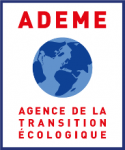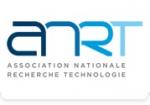Post-doc chimie/chimie théorique
| ABG-133424 | Thesis topic | |
| 2025-09-16 | Other public funding |
- Chemistry
Topic description
Luminescent materials have become essential in numerous everyday applications such as lighting, displays, and detection systems. A current challenge is to develop multifunctional, stimulusresponsive materials capable of meeting various needs, such as the detection of hazardous chemical substances (chemical weapons, poisons) or serving as luminescent markers for quality control, traceability, and anti-counterfeiting. This research project focusses on the preparation of novel photoactive molecular systems based on Cu(I) precursors—a non-strategic and abundant metal. More specifically, it aims to develop luminescent Cu(I)-based monomers and corresponding supramolecular luminescent polymers.
Building on straightforward and already-established synthetic methods developed in the INSA Rennes group and the ICPEES group, this project will generate a wide variety of structures and associated photophysical properties. This will enable the emergence of innovative materials combining intrinsic luminescence with sensitivity to external stimuli (temperature, pressure, atmosphere, solvents...), offering a broad range of emission colors and behaviors. The approach will notably include monomers with ESIPT properties developed at ICPEES, which will be used
as linking ligands with Cu(I) TADF-emitting precursors to obtain supramolecular polymers with high luminescence efficiency and sensitivity to external stimuli. The new derivatives will be characterized using various techniques such as powder and single-crystal X-ray diffraction, NMR, UV-Vis, and IR spectroscopy. Their photophysical properties will be studied in the solid state as a function of temperature (emission spectra, quantum yield measurements, and excited-state lifetimes), to elucidate the electronic structure of the prepared compounds in both ground and excited states.
A particular attention must be devoted to the association of photoactive derivatives with advanced organic polymer matrix bearing specific functionalities, promoting the rise to innovative soft materials, that can be easily shaped allowing preparation of device prototypes whose performances can be evaluated in real operating conditions. The candidate will associate the photoactive species prepared in this project with various functional organic polymers selected for their own capacity to operate specific phase segregation and respond to the application of external stimuli. One key point lies in the identification of specific building blocks (Cu(I) species and organic polymers) that should present in the targeted soft materials a good compromise between a certain degree of rigidity, preserving noticeable photoactive properties toward non-radiative deexcitation pathways, but also a significant malleability (flexibility and/or porosity) to allow the different units to be reactive to application of external stimuli and adapt their geometry to external factors.
Comcumitantly with these experimental works, this post-doctoral work will mostly focuses on advanced computational studies to understand the photophysical properties of these ESIPT/TADF assemblies and of some model reference compounds. Most calculations will be conducted using DFT and TDA-DFT methods via the ORCA 5.0 software, which allows for evaluating spin-orbit coupling (SOC), a key factor in intersystem crossing (ISC) and reverse ISC (RISC). These studies will also focus on solid-state environmental effects, including steric hindrance and various intra/intermolecular interactions (cuprophilic, charge-transfer, π-π stacking), which influence excited-state geometry and luminescence. A stepwise modeling protocol of increasing complexity will be applied, using QM/MM methods under periodic conditions. SOC and excited-state geometry optimizations will help identify ISC/RISC probabilities and the specific components involved.
These insights will clarify how each molecular subunit contributes to optical behavior and guide the design of new luminescent assemblies.
As part of this research, the recruited candidate may be invited to actively participate to the research efforts conducted in the CTI-University of Rennes and CSM-Insa Rennes groups of the Institute of Chemical Science of Rennes as well as with our partner at ICPEES-University of Strasbourg.
Starting date
Funding category
Funding further details
Presentation of host institution and host laboratory
INSA Rennes is the largest public engineering school in Brittany. It welcomes 2,040 students and apprentices. Each year, over 340 engineers, 60 master's students, and 40 PhDs graduate from the school. With 9 academic departments—including 7 engineering specializations and 1 apprenticeship program—and overseeing 6 research laboratories, INSA employs around 540 public service staff (including teaching researchers, lecturers, and administrative and technical staff), along with over 70 part-time instructors from industry.
As part of this 18 months postdoctoral research project funded by the ANR (French National Research Agency), the selected candidate will work both in the INSA component of the Solid State Chemistry and Materials (CSM) team and in the Inorganic Theoretical Chemistry (CTI) team located at the University of Rennes at the Institute of Chemical Science of Rennes (more information available at: https://iscr.univ-rennes.fr/fr/inorganic-theoretical-chemistry-cti and
https://iscr-csm.insa-rennes.fr/members/). The selected candidate will become part of two multidisciplinary teams composed of researchers, faculty members, and doctoral/postdoctoral students. More specifically, the candidate will work in interaction with two CNRS research directors (Dr. K. Costuas and Dr. C. Lescop), an INSA lecturer (Dr. G. Calvez) and a PhD student.
This postdoctoral research position is funded by the ANR PRC project "LumiCup", led by the INSA team in partnership, in the Institut des Sciences Chimiques de Rennes, with the Inorganic Theoretical Chemistry team and with the ICPEES (Institut de Chimie et Procédés pour l'Énergie, l'Environnement et la Santé), CNRS–University of Strasbourg. The candidate will be more specifically mostly involved in studying the effect of the incorporation of luminophore additives prepared in the projet within various matrix (organic polymers, metal organic frameworks). The candidate will also take part to computational chemistry studies conducted in the Inorganic Theoretical Chemistry team and will be in regular collaboration with the partners at the INSA of Rennes and at the ICPEES in Strasbourg. While synthetic work, structural and photophysical characterizations will be carried out within the INSA Rennes group and at the ICPEES in Strasbourg, theoretical studies will be pursued at CTI team of the University of Rennes.
A description of the available equipment in the CTI team can be obtained at https://iscr.univrennes.fr/fr/computational-facilities and in the INSA component of the CSM team at : https://iscrcsm.insa-rennes.fr/lab-facilities/. Additionally, the full range of instruments at the Institut des Sciences Chimiques de Rennes (https://iscr.univ-rennes.fr/facilities-equipment), including NMR spectrometers and single-crystal X-ray diffractometers, will also be accessible as needed for the development of this research.
Website :
Candidate's profile
The ideal candidate will have expertise in coordination chemistry, supramolecular or organic chemistry, and be proficient in standard analytical techniques (NMR, UV-Vis, IR, etc.). A strong interest in solid-state characterizations, such as X-ray crystal structure determination and solidstate photophysical studies, is essential. Experience in embedding molecular materials into polymer matrices would be a plus, as well as in quantum computational studies of density functional type.
Vous avez déjà un compte ?
Nouvel utilisateur ?
Get ABG’s monthly newsletters including news, job offers, grants & fellowships and a selection of relevant events…
Discover our members
 CASDEN
CASDEN  Aérocentre, Pôle d'excellence régional
Aérocentre, Pôle d'excellence régional  Groupe AFNOR - Association française de normalisation
Groupe AFNOR - Association française de normalisation  Généthon
Généthon  Nokia Bell Labs France
Nokia Bell Labs France  Institut Sup'biotech de Paris
Institut Sup'biotech de Paris  ONERA - The French Aerospace Lab
ONERA - The French Aerospace Lab  PhDOOC
PhDOOC  Tecknowmetrix
Tecknowmetrix  MabDesign
MabDesign  ADEME
ADEME  ANRT
ANRT  ASNR - Autorité de sûreté nucléaire et de radioprotection - Siège
ASNR - Autorité de sûreté nucléaire et de radioprotection - Siège  CESI
CESI  Laboratoire National de Métrologie et d'Essais - LNE
Laboratoire National de Métrologie et d'Essais - LNE  SUEZ
SUEZ  TotalEnergies
TotalEnergies  MabDesign
MabDesign  Ifremer
Ifremer
